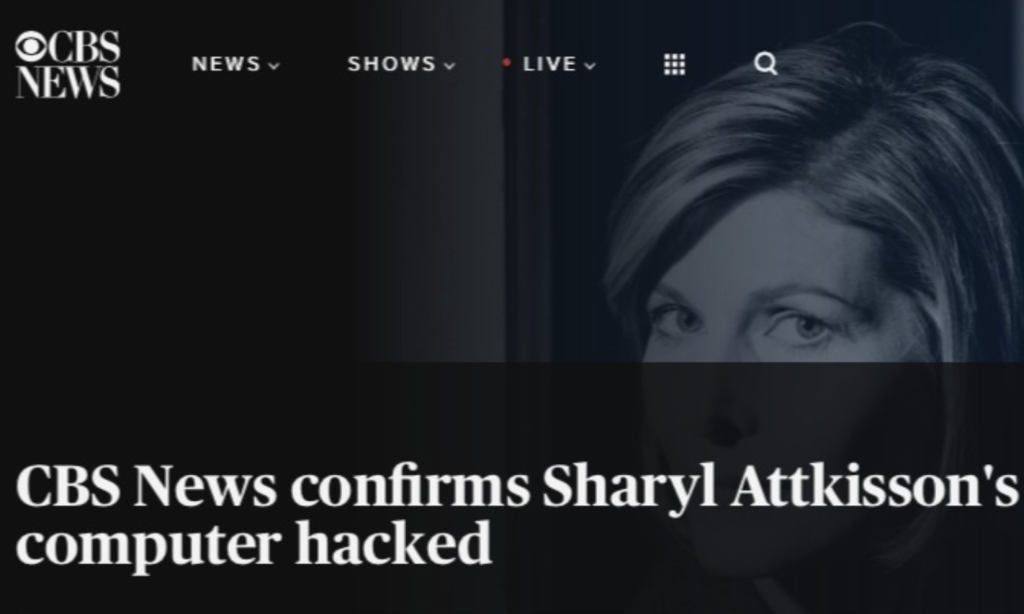
The following is a transcript of an investigative report on Full Measure News. Click on the link at the end of the transcript to watch the video story.
Today, more older people are staying the labor force, working longer than they ever have before. It’s partly because they’re physically able to; partly because they have to for financial reasons. At the same time, some employers are trying to push them out. Today we examine how that dynamic is playing out at tech giant IBM, which is accused of a mass undertaking to replace thousands of older employees with what executives called “New Collar Workers.”
Bill Timme retired from the Navy as a rear admiral and went on to a second career at IBM where he became the global defense and intelligence leader.
He worked happily and successfully there for almost ten years until a call from his boss in January 2017.
Bill Timme: He said, “Well, Bill, this is not a call I really wanted to make.”
Sharyl: What did you think when he said that?
Timme: I go, “Okay, this is not going well.”
Sharyl: Was that out of the blue?
Timme: Completely out of the blue. And so my boss said, “you’ll get an email shortly saying that you’re going to be laid off.”
Timme had just turned 61. He became an apparent casualty of a corporate program aimed at transforming the workforce.
International Business Machines or IBM was once America’s tech leader. The company revolutionized the computer punched card and, later, the personal computer or PC. It was the Microsoft of yesteryear. Over time, it came to be viewed as more of a dinosaur.
Shannon Liss-Riordan: IBM in recent years has been competing with a new brand of younger hipper tech companies like Google, like Amazon. And IBM has recognized that it’s got a reputation for being an older tech company.
Attorney Shannon Liss-Riordan represents more than 500 former IBM employees.
Liss-Riordan: A strategy that IBM has been undertaking for a number of years now is to try to systematically reduce the age of its workforce by getting rid of older employees, many of whom who have been with the company for decades and replacing them with younger employees.
Workers age 40 and over have been a protected class since the Age Discrimination in Employment Act was passed in 1967. But some argue age discrimination remains widely practiced and accepted in the workplace today, and is notoriously difficult to prove. At IBM, critics say they found an undeniable pattern. In 2018, the journalism group ProPublica reported that IBM fired more than 20,000 employees over age 40 over a six year period.
Fight government overreach and double-standard justice by supporting the Attkisson Fourth Amendment Litigation Fund for Attkisson v. DOJ and FBI for the government computer intrusions. Click here.
Liss-Riordan: We’ve also uncovered a number of IBM strategic planning documents in which they expressly talk about the need to refresh their workforce, rebalance their workforce, focus on what they call early professional hires.
A reported internal IBM strategic planning document, submitted as evidence in court, refers to “Re-profiling Current Talent.” Under “Continuous talent refresh” it reads: “Focus on programs to create room for new talent to build skills for key growth areas…” Under “Expected Outcomes”: “55% Early Professional Hires in 2020” and “10% annual talent refresh.”
Former top IBM executive Catherine Rodgers says that’s code for replacing older workers with young ones. Her testimony is a key part of the case against IBM. She was fired in 2017 after 40 years— she says for warning her superiors that their hiring and firing strategies amounted to age discrimination.
IBM’s stated goal was to hire 25,000 people over 4 years. But doing so without expanding the workforce, Rodgers alleges, implied a parallel plan to reduce 25,000 older workers. She says IBM’s CEO at the time even coined the phrase: “new collar workers.”
Liss-Riordan: So there’s a big focus for a number of years at IBM about bringing in these so-called new collar workers. But in order to bring in 25,000 of these workers, they needed to make space for them. And the way they did that was through a number of strategies to reduce their employment of older people.
Nobody from IBM would agree to an interview. A spokesman told us, “Our employment actions always have been based on having the right skills at the right levels in the right jobs—never on the age of any individual or group of employees.”
Sharyl: Is age discrimination something that’s hard to prove?
Richard Johnson: Oh. It’s very hard to prove.
Richard Johnson heads up the Program on Retirement Policy at the Urban Institute, a research nonprofit.
Johnson: I think the way I would define age discrimination as if you’re treating someone differently on account of their age when it doesn’t reflect their productivity, the contributions that they can make in the workplace.
Sharyl: A business might say ‘These happen to be older workers because of the stage of the career that they’re at, but they’re also more expensive workers and we feel like in some ways perhaps less productive in the aggressive ways we want someone to be for their career. So it’s not because they’re older, it’s just because of what they cost the company and how we see them as an employee.’ Isn’t that a fair way to look at things for some employers?
Johnson: And that’s certainly what employers claim. In terms of the higher costs though, what we do find is that a lot of older workers are willing to work for less, that they don’t really expect that they’re going to get paid as much as they did at the peak of their earnings career. And we know that after age 50, after age 55, earnings actually tend to fall for older workers. And yet, they can’t even be hired at those lower wages.
According to the Urban Institute, someone 65 or older is 95% more likely to be working today than they were 35 years ago. But on the flip side, a study of retirement trends from 1998-2014 found more than half (56%) of people working full time in their early 50s, were pushed out of their jobs before they reached age 65.
The complaints against IBM got a boost last fall when the federal body overseeing such claims, the Equal Employment Opportunity Commission, rejected IBM’s arguments.
The Commission found nearly 86% of IBM’s potential layoff pool was older workers and that the evidence showed, “There is reasonable cause to believe that [IBM] discriminated against [the employees] on account of their age.”
In response, IBM told us: “We were disappointed by the [Commission’s] preliminary findings. IBM makes decisions based on skills and the needs of its business units, not age.”
Meantime, the way IBM handled the lay-offs or “separations” has further complicated attempts to sue. In order to get a month or so of severance pay, most of the employees— like Timme — signed an agreement saying they’d have to pursue any age discrimination claims through arbitration rather than banding together in one, powerful global lawsuit.
Liss-Riordan: So by focusing on each individual separation individually, IBM is trying to avoid having anyone take a look at the big picture.
Timme has joined the class action suit Liss-Riordan is trying to build with hundreds of ex-IBM employees. Today, he’s 65 and doing some consulting but isn’t working full-time. Even though he says he has plenty of gas left in the tank.
Sharyl: Do you feel like you have more good working years left in you or are you going to call it a day?
Timme: Oh, I’ve definitely got more working time.
Sharyl (on-camera): The former employees hope to receive an eventual payout from IBM. Advocates are pressing Congress to step in and ban forced arbitration that prevent workers from banding together to enforce their rights in court.
Click on the link below to watch the video report on FullMeasure.news:
http://fullmeasure.news/news/cover-story/new-collar-workers









